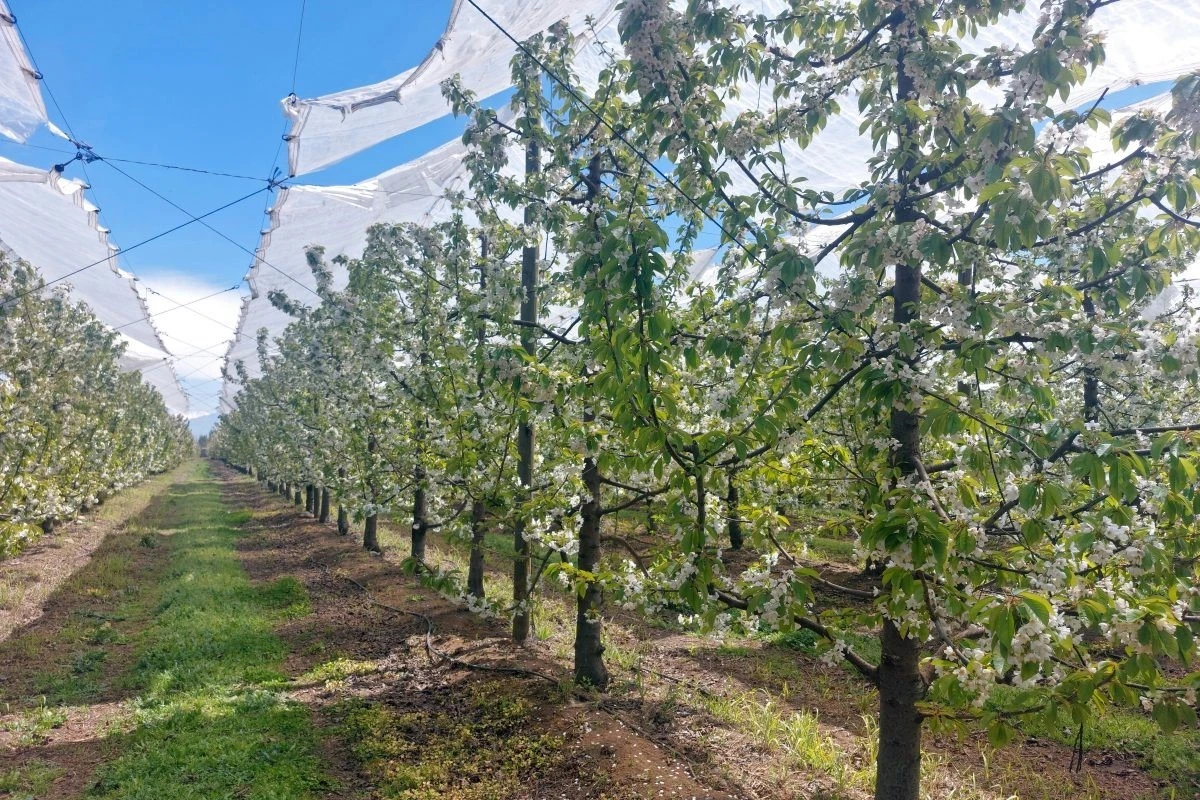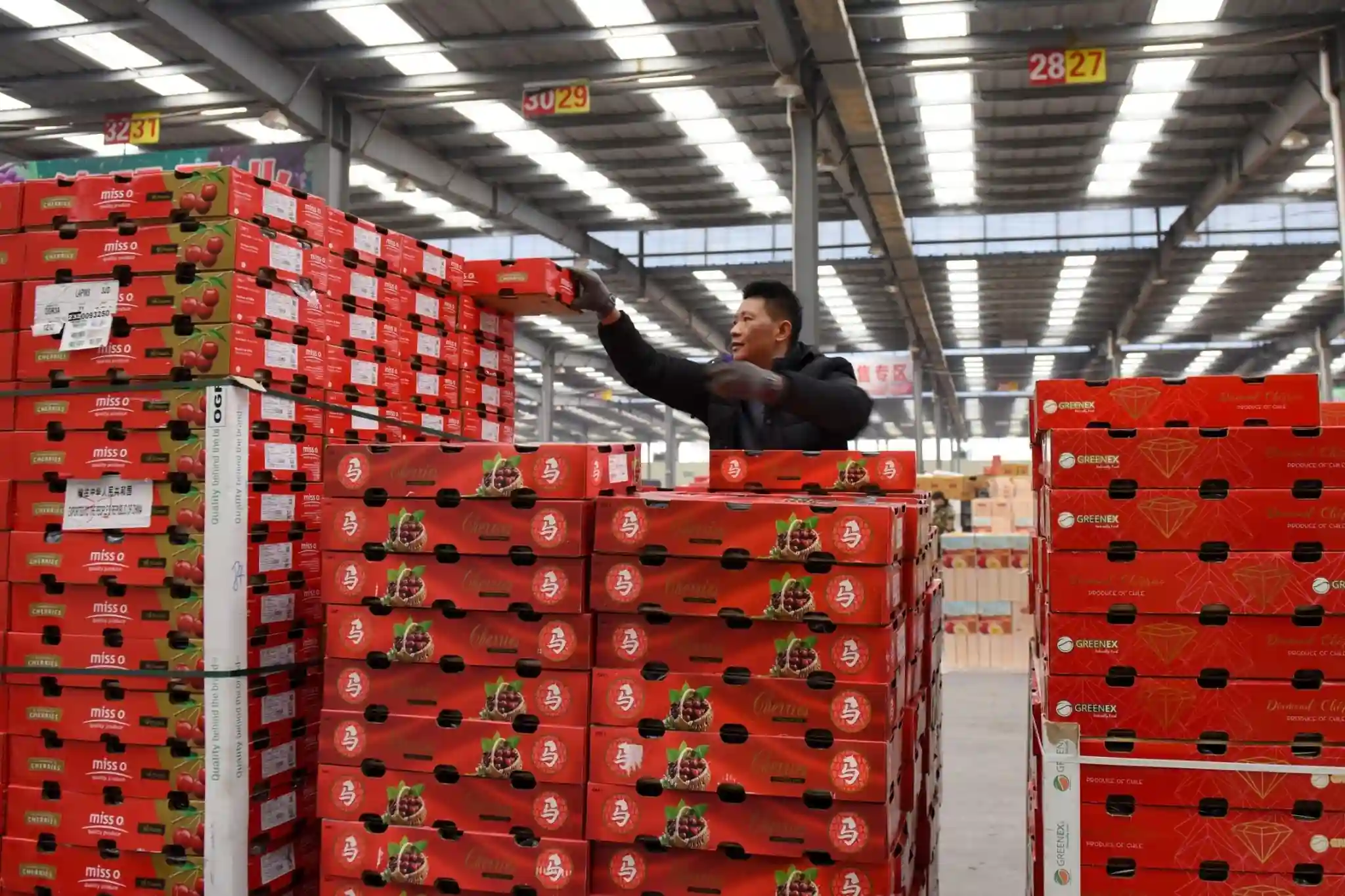
Stefano Lugli – SL Fruit Service
Cherry Times - Chair of technical-scientific committee
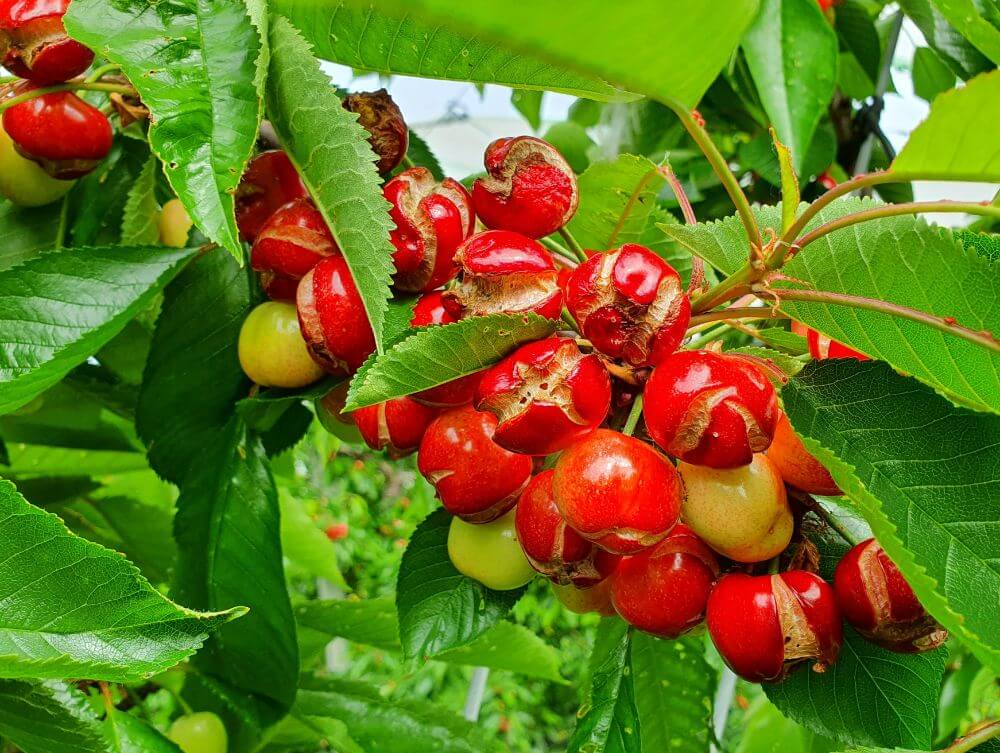 Figura 1. Cracking su ciliegio
Figura 1. Cracking su ciliegio
Rain cracking is a serious physiopathy found in many fruits, such as citrus fruits, apples, pomegranates, plums, table grapes and, above all, cherries. Cracking is the cause of enormous economic damage, both direct and indirect, and is destined to become an increasingly significant problem due to ongoing climate changes: increasingly intense rainfall events concentrated near the final stages of development and ripening of the drupes, as happened recently in the Vignola cherry production area, but not only, with more than 100 mm of rain falling in just two days just a few days before the start of the first harvests.
Genesis of cracking
From a physiological point of view, cracking is described as a series of chain reactions that lead to the rupture of the fruit's epidermis cells. Initially, it results from localised water absorption at the epidermal level, which causes the rupture of individual cuticle cells (microcracking).
These cell lesions cause a release of malic acid into the intracellular spaces, a swelling and weakening of the epidermis and underlying hypodermal cells. This generates the evident cracks on the fruit (macrocracking). Absorption of water by the fruit basically occurs in two ways: by osmosis through the cuticle and through the vascular system of the plant by absorption of water from the roots.
 Fig. 2. Schematisation of the genesis of cherry fruit cracking following rainfall. Source: Correia et al., 2019.
Fig. 2. Schematisation of the genesis of cherry fruit cracking following rainfall. Source: Correia et al., 2019.
Predisposing factors
Atmospheric variables occupy the first place among the causes responsible for this phenomenon: rainfall and high air humidity increase fruit cracking; high temperatures also play a decisive role in that they increase transpirative processes and the absorption of water by the roots, water that then reaches the foliage and fruit; soil humidity and water availability also play a decisive role in the genesis and harmfulness of cracking.
Other concauses may indirectly derive from agronomic practices aimed at obtaining a larger fruit size: for example, reducing fruit load with short pruning or fruit thinning, excessive inputs of fertilisers or growth regulators, or the use of vigorous versus dwarfing rootstocks, etc.
The genetic component also plays a not insignificant role. It is well known that larger fruits with firmer flesh are more susceptible to cracking, as are those with a high sugar content. Unfortunately, or fortunately, depending on one's point of view, the new cherry varieties have been selected to meet the demands of the market and consumers, who want them beautiful, large and tasty.
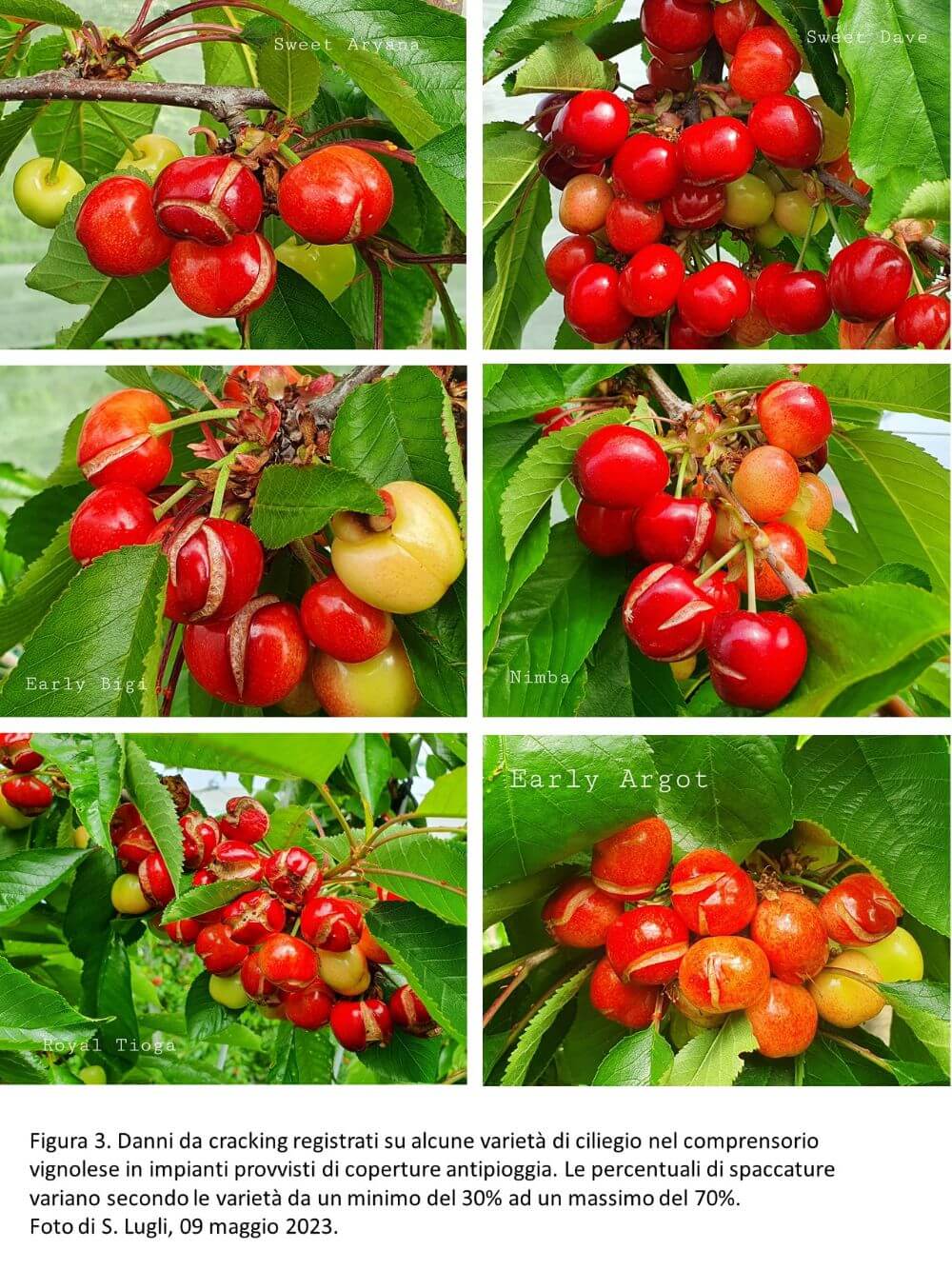
At the varietal level, resistance to cracking is related to the conformation and elasticity of the fruit epidermis, as well as the duration of the initial stages of fruit development and the final stages of drupe ripening. There is evidence that varieties with a higher tolerance to cracking are those with a longer cell division period (phase 1). In fact, the protective cuticle of the fruit stops growing in the phase prior to veraison, while the pulp continues to increase its volume in the final stages of ripening.
It is no coincidence that treatments with calcium or silicon salts, which strengthen the membranes, are recommended precisely in the early stages of fruit development.
At the same time, there is evidence that early-ripening varieties, with a peridium development time between flowering and ripening of only 35 to 40 days, are considerably more susceptible to cracking than later-ripening varieties, which have a much lower growth rate (mm/day) and are better able to cope with the increases in volume and internal pressure that the fruit undergoes as a result of direct and indirect absorption of water from rainfall.
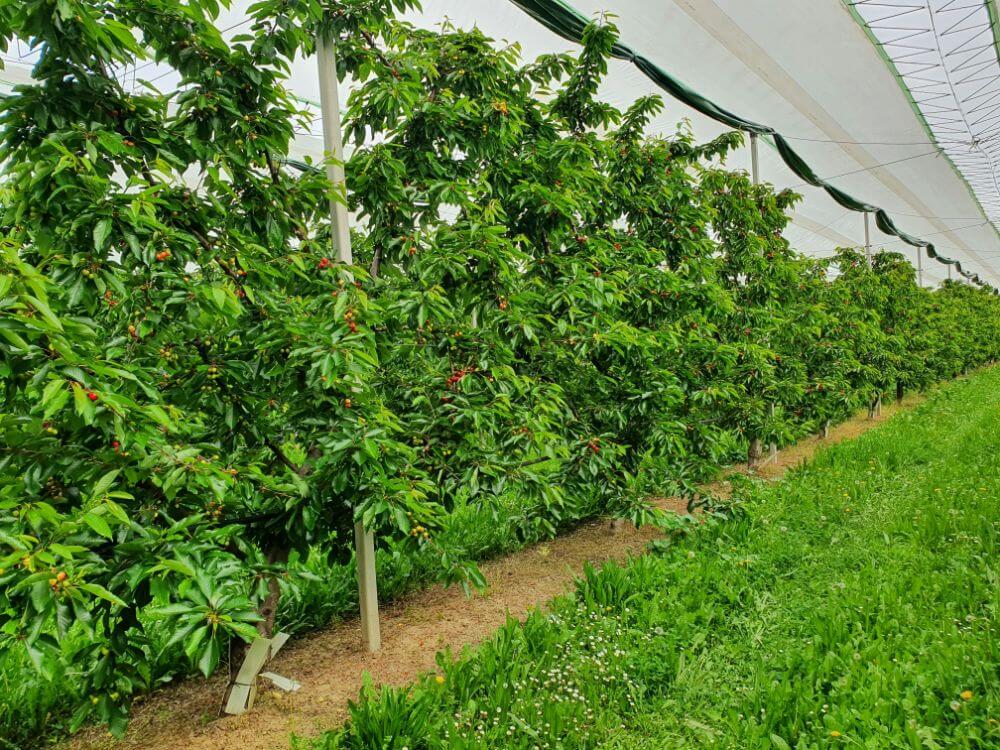 Fig. 4 - Burlat row with Solution system rain cover. This year Burlat, together with Sweet Early, were the early varieties with the least cracking, even under cover. Photo by S. Lugli, 09 May 2023.
Fig. 4 - Burlat row with Solution system rain cover. This year Burlat, together with Sweet Early, were the early varieties with the least cracking, even under cover. Photo by S. Lugli, 09 May 2023.
Control strategies
Along with preventive treatments based on mineral salts, phytoregulators, biostimulants, antiperspirants and so on, the most effective means of controlling splitting remains rain covers. These structures prevent rainwater from coming into contact with the plant and the fruit. They do not prevent, in some cases instead they accentuate, the absorption of water by the roots, which then reaches the fruit.
For these and other reasons, it can happen, as happened this year albeit under exceptional conditions, that even undercover cherries suffer severe cracking. There could be several reasons for this and they are all related to the factors predisposing cracking.
For example, higher under-cover temperatures may have accentuated the transpiration of the tree and thus the absorption of water towards the fruit; a dry leaf certainly transpires more than a wet leaf of a tree in natural conditions without an umbrella; the higher relative humidity of the air in covered systems compared to uncovered systems may have facilitated the formation of micro-wounds which then evolved into macro-cracking; single-row systems involving all rainwater towards the root systems are certainly more risky for cracking than single-row or canopy systems.
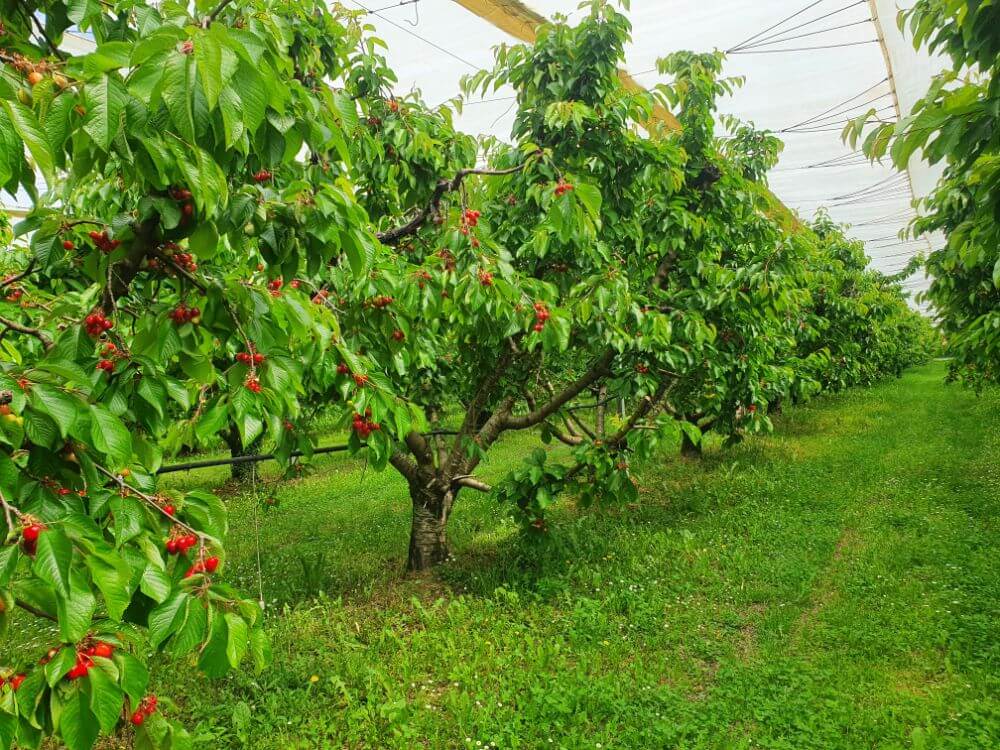
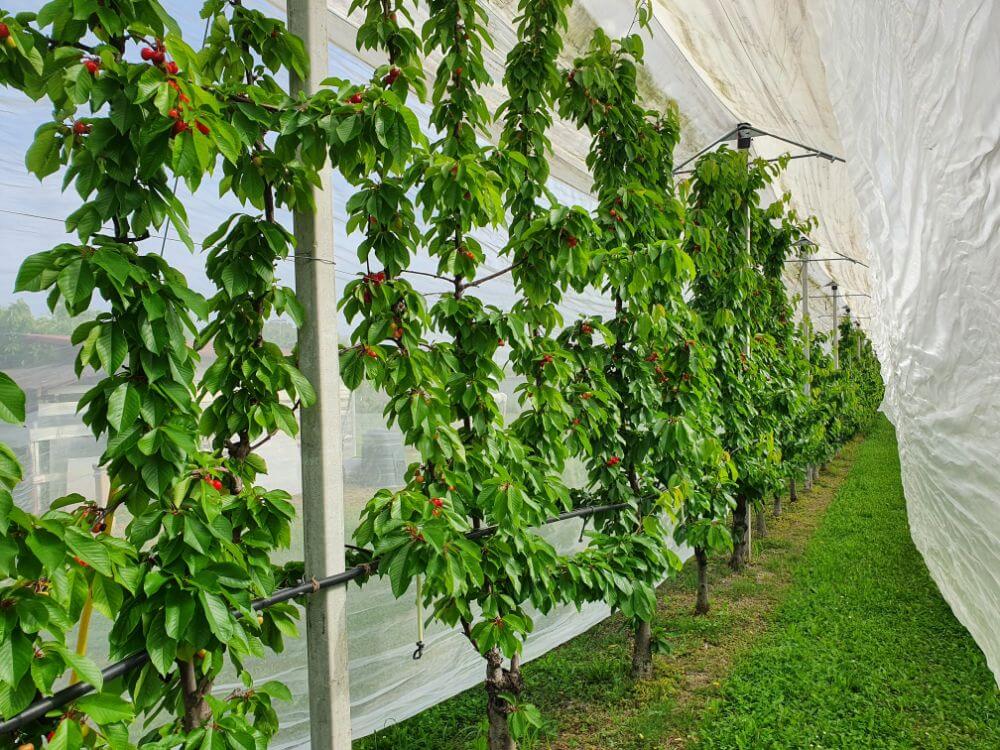 Figure 5a and 5b. Early Bigi row under Tramprain system canopy cover (5a) and Nimba row under Keep in Touch system cover. In both cases the cracking percentage exceeded 40%. Photo by S. Lugli, 09 May 2023.
Figure 5a and 5b. Early Bigi row under Tramprain system canopy cover (5a) and Nimba row under Keep in Touch system cover. In both cases the cracking percentage exceeded 40%. Photo by S. Lugli, 09 May 2023.
Despite the many integrated management strategies implemented at various levels, the problem of cracking remains far from being completely solved. Further research is needed to learn both the root causes of cracking as well as new approaches in strategies to try to mitigate its damage.
The genetic route, through the study of molecular markers associated with cracking tolerance, remains perhaps the only way out in order to finally obtain cherry varieties resistant to rain cracking.
Cherry Times - All rights reserved











